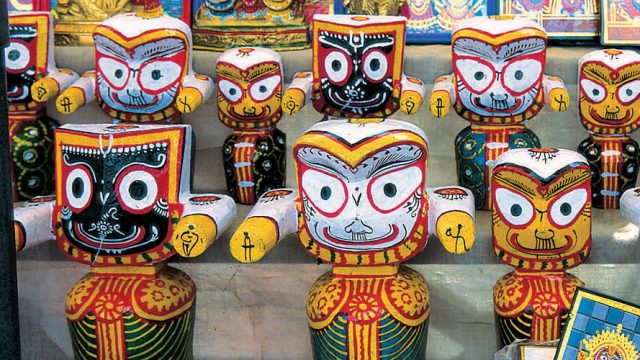As they say, there is something special about Lord Jagannatha. His striking visage only adds to his magnetism, and it is precisely because of his remarkable countenance that all sorts of faiths have tried to appropriate him.
Some scholars believe the three richly decorated figures of Jagannatha, his brother Balabhadra and sister Subhadra represent the Buddhist triad of Buddha, Dharma and the Sangha. Some say his idol sports an object representing a bone from Lord Krishna’s body, while others surmise it could be the tooth relic of the Buddha. To quote one commentator, “He is capable of absorbing all sects and creeds to its fold… No wonder one discovers in it the remnant of primitive folk cult of tree worship, the esoteric practices of tantra, the meditative approach of the Buddhists, the universal tolerance of the Jains and the comprehensive religion of Vedantism.” This all-inclusiveness is what makes Jagannatha so popular. He is also probably among Hinduism’s most loved and pampered gods (save for Lord Venkateshwara of Tirupati), and is surrounded by elaborate pomp and ceremony throughout the year.
Lord Jagannatha’s teeth are cleaned every day before he is clothed in one of the 36 exquisitely designed dresses in the temple wardrobe. Twenty-thousand servants wait on him, and in his honour 400 cooks prepare a whopping 100 dishes for over 10,000-15,000 devotees every day. His annual chariot festival attracts millions of the faithful. If you want to experience up close Lord Jagannatha’s powerful hold over his devotees, there is no better way than to take part in the annual Rath Yatra held here. in June-July.




